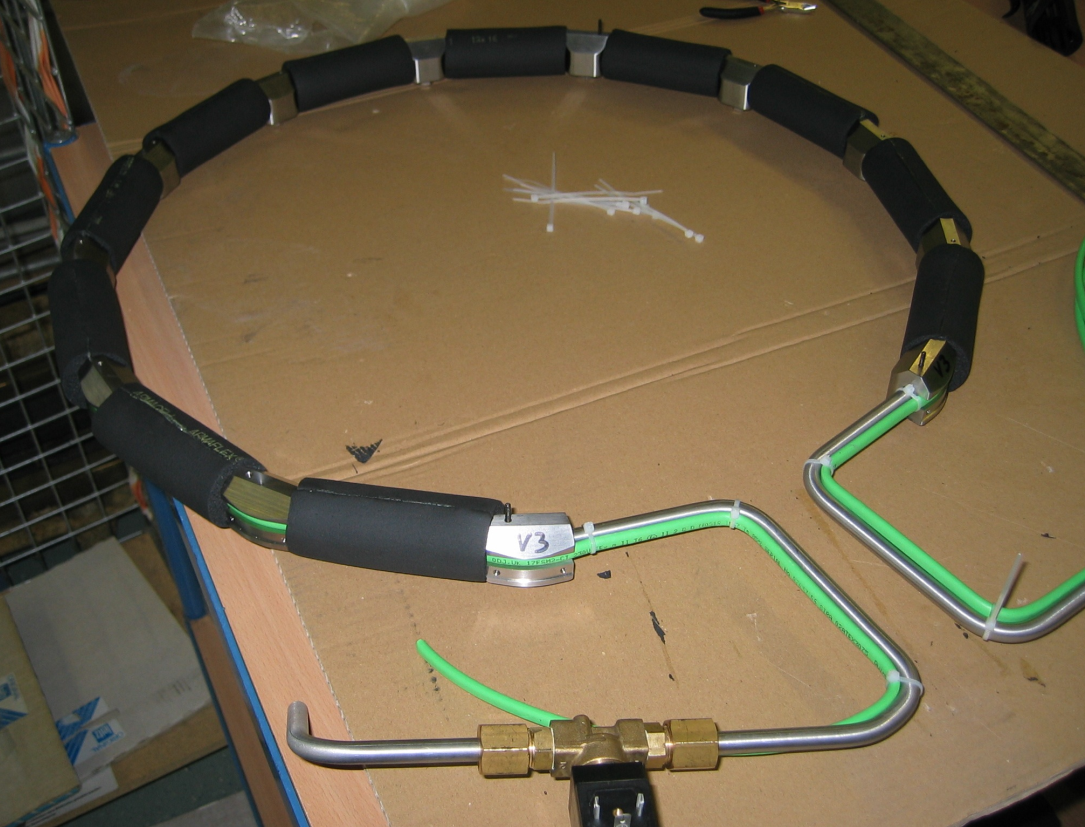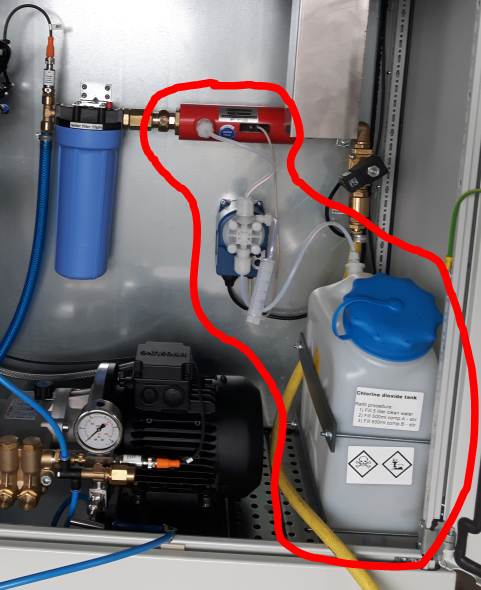Add-ons
Frost protection
Especially in winter, with very low temperatures outside, systems which are used in unheated halls or outdoors, cannot work properly. Therefore, an efficient frost protection for the whole system is necessary. Firstly, it is to decide if the system is further used at danger of frost or if it can be deactivated for this time. The pump itself should be stored at a frost-protected place. However, a frost protection system can help to protect the whole system from frost.
Manual frost protection
This version is the simplest but also the most time-consuming for the operator because it needs to be deactivated and blown out at any danger of frost. Therefore, it can be assumed that the system is already deactivated in the transition periods (cold nights, warm days).
Automatic frost protection
The automatic frost protection system recognizes low temperatures. At danger of frost, the whole system is deactivated automatically. Additionally, all pipes and machines are blown out with compressed air to prevent frost damages. Hence, the system is frost-protected and can be activated at warmer temperatures again. The system can be used during transition periods. However, it cannot be activated during frost times.
Full operation during frost periods
If the system needs to work during frost periods, a heat trace for water-bearing pipes should be installed. The heat trace only needs to be active during operations. After deactivating, the whole system and pipes are blown out to save electricity costs. Hence the system can be used throughout the whole year.
Chlorine-dioxide disinfection system
To prevent contamination of water-bearing pipes but also to combat existing bacterial breeding grounds, the pump should be equipped with a chlorine-dioxide disinfection system. It is a tested and reliable method due to the fact, that it is also mentioned in the “Austrian book for food“ by the ministry of health.
A so-called “injection-station” is connected on the side with low pressure. It includes a dosing pump which automatically injects a concentrated solution of chlorine-dioxide.
Water quality
In order to guarantee the flawless functionality of the machine, some criteria need to be considered:
- The liquid, which is dispersed into mist, should be without any floating pollution.
The preceding filter protects the machine from pollution. However, another filtration system is required at high pollution levels. - The used water needs to show a low value of salinity.
In general, the water salinity in Central Europe is suitable for the system. However, the ground water near the coast shows different characteristics (e.g. Cyprus or Middle East). The measured salinity in these areas exceeds Central Europe by far. - The water which is dispersed into mist should be without clay.
Because of its fine-grain character, filtration systems hardly detect it. At first, the filter cloth seems to be clean. The proof can only be seen after drying the bulk when the filter is blown out with high pressure and white dust appears. - The ideal total hardness of water depends on the application. Most of the applications require a specific (low) water hardness. Higher water hardness should not pose a problem to the pump and spray nozzles as long as the fog machine is not deactivated for a long period of time. The advantage of the inserted swirl nozzles is that they are self-cleaning.
Water with a high hardness contains a specific amount of chalk. If the plant is not used for a long period of time, nozzles could calcify. In general, water with high hardness should be softened or a different source of water should be used. It should be taken into account, that chalk will drop out of the spray nozzle during evaporation if the used water contains high hardness. This could lead to gray fog and massive calcification on the area which is misted.
In general, the ideal total hardness is 3 to 6°dH (german degrees) for most of the applications.

